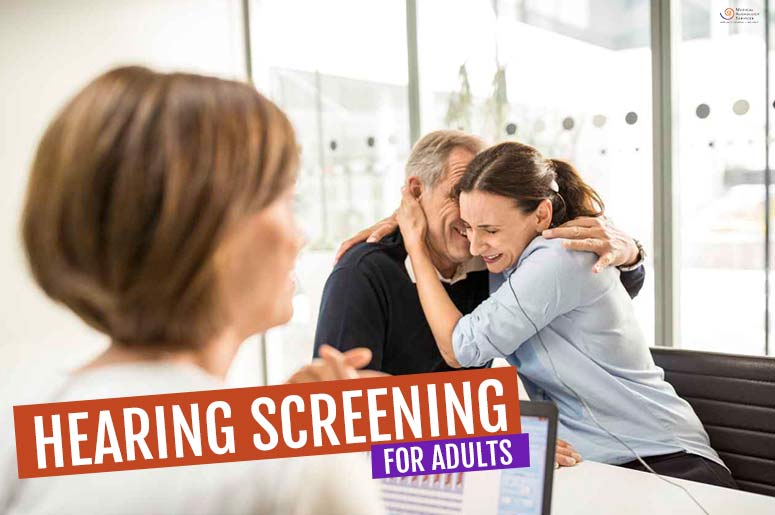Hearing Screening for Adults
It can take a person many years after noticing difficulties hearing to seek help from their GP or an audiologist. Many people are unsure of the types of testing that can be performed in a hearing clinic and are anxious about receiving impartial advice.
People may also delay a hearing screening because they are unsure if it appropriate for their hearing issues. They often feel that they do not have a problem hearing many common every day sounds, so they must not have a hearing issue. The most common early indicators of a hearing issue which needs attention are:
- Trouble hearing clearly in noisy places such as restaurants
- Asking family and friends to repeat themselves
- Tinnitus
- Hearing someone speaking but lacking clarity
If you experience any of these issues, it is worth seeing an audiologist for a hearing screening.
This article outlines the tests that are commonly performed during a hearing screening in adults.
Also read: Adult Hearing Assessment
Pure Tone Audiometry
This method of hearing screening measures your ability to hear different frequencies (or pitches) and volumes of sounds. The said test uses earphones just like most of the hearing tests in an audiology clinic. Whenever you hear a tone or a certain sound, you perform some task, such as pressing a button. From your responses, the audiologist identifies the quietest sound you can hear at each pitch. After the hearing screening, your result will be illustrated on a chart called an audiogram.
Bone Conduction Testing
Bone conduction is another type of pure-tone audiometry which assesses your inner ear’s detection of sound. Just like pure tone audiometry, it aims to find the quietest sound you can hear at each frequency. However, instead of earphones, it uses a devices that conducts vibrations behind your ear. It will directly send vibrations through the bones in your ear to the inner part of your ear. By comparing the responses on the bone conduction (which measures your inner ear’s hearing ability) to the pure tone test (which measures the whole hearing system’s responses to sound) your audiologist can detect which part of the hearing system is not working effectively. After the Bone Conduction Test, your hearing specialist can determine if you have hearing loss, how much hearing you have lost as well the type of hearing loss you have.
Tympanometry Testing
Tympanometry assesses how your middle ear and eardrum responds to air pressure. A machine with a small rubber tip is placed at the edge of your ear canal and a sends air down the canal to move the ear drum and middle ear bones. The middle ear system should move somewhat. Too little or too much movement can indicate a problem with the middle ear. In this way, if there is a build-up of wax and other complications of the eardrum or middle ear system, your audiologist will be able to determine so.
Related article: Tympanometry
Speech Testing
Speech testing assesses how well you can detect or understand words and phrases at certain levels. It can be performed in quiet or with background noise present. Speech testing can be useful for a number of purposes including confirming the pure tone testing is accurate and confirming the brain’s ability to make sense of the individual sounds that make up speech.
ABR (Auditory Brainstem Response)
ABR testing measures the electrical activity of the brain to determine whether a sound was detected by the ear. It assesses how your brain responds to certain sounds at various levels and intensities. ABR is not often used for general hearing tests and is mostly used for infants and cases needing an objective measure of hearing, such as workers compensation claims.
Otoacoustic Emissions
Otoacoustic emissions are the tiny vibrations that cells in the inner ear emit in response to a sound. By measuring these emissions, we can know that the sound was detected by the cell. A small rubber tip is placed in the ear canal and sounds of different pitches are played. The patient does not need to respond for this test.
Acoustic Reflex Testing
Acoustic Reflex Testing measures the muscles in your middle ear’s involuntary contractions to sound. The test also examines where your hearing issue is located and what type of hearing loss you have.
Following these tests, your audiologist will take time to explain the results and address any concerns you have about your hearing and communication. Your audiologist can interpret these tests together with your individual history to give you recommendations on what steps to take next, including medical referral.
Are you anxious about seeking help?
We have answers for your anxious questions! Browse through our website and read our articles for important information. Our audiologists are also here to guide you through the process and answer any questions you have.

